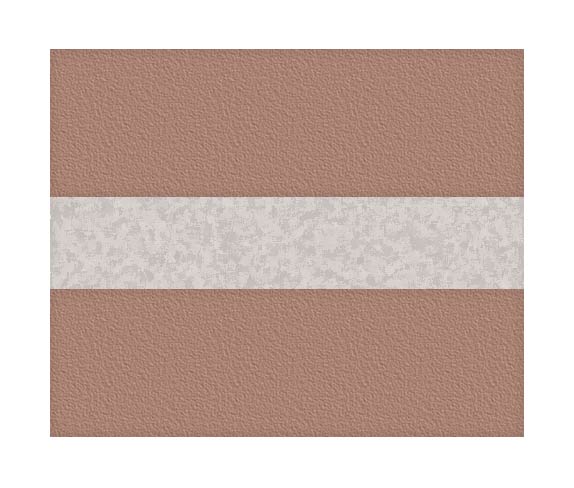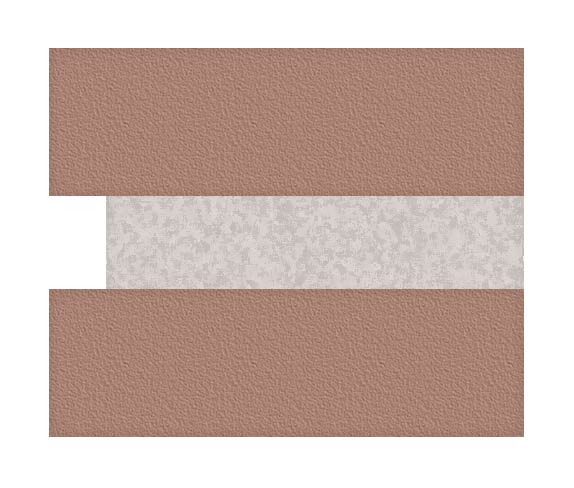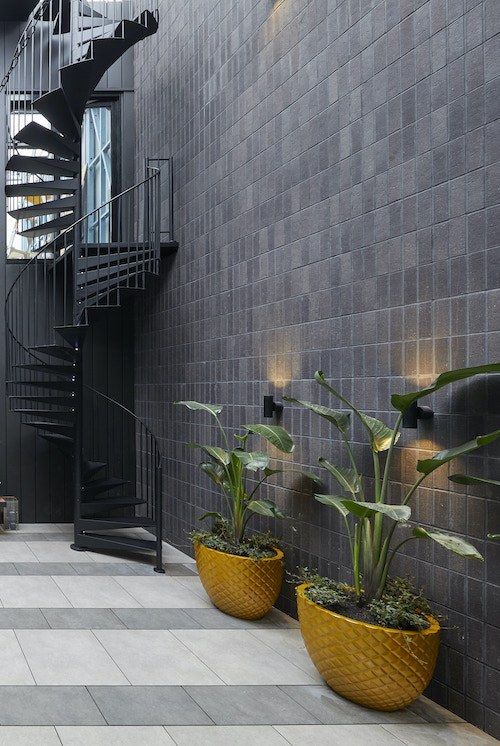What is mortar?
The traditional role of mortar in bricklaying is simply to bind bricks together. However today, mortar is also used as an important design tool that can accentuate the exterior colour and form of your building project.
Mortar is a building material composed of cement, fine sands and water, with lime often added to improve the durability of the product. When water is added to the mortar mix it hardens and cures, acting as the glue to hold together the bricks used in building structures.
What is a mortar joint?
Mortar joints are the spaces between bricks that are filled with mortar. They serve several purposes in brickwork, their primary function being to bond bricks together allowing the brickwork to act as a structural element to carry both vertical and lateral loads.
The second function of mortar joints is to accommodate the natural dimensional variations that are inherent in clay bricks. Properly filled and tooled or ironed joints improve the durability, weather-proofness and sound performance of brickwork.
Types of mortar joints

Round-ironed mortar joints (most popular/common)
Round-ironed mortar joints enhance the effect of the brickwork by emphasising the mechanical regularity and repetition. They are best suited to textures like smooth-face, rolled, wire-cut and glazed bricks.

Flush mortar joints
Flush mortar joints are great for irregular bricks, as they fill space and can mask some of the irregularities if you don’t want these to stand out in your project, creating a consistent surface finish. They also help to protect the underside of the bricks in some instances. This type of mortar joint works well with our Crafted Sandstock range, any brick with a recycled look (our Manhattan range, for example) or any distorted or rumbled brick (like the PGH Woodstock range available in Queensland).

Raked mortar joints
Raked mortar joints create an ever-changing shadow line that evokes contrast and interest in your brickwork. They are best suited to textures like sandstock and rolled bricks, and are not to be used on bricks that have a matte or glazed finish.
Raked mortar joints pronounce the characteristics of each individual brick, particularly the edges. With this in mind, raked mortar joints can make a brick wall look very different to if it was built using a flush mortar joint - as always, it’s all down to personal taste and preference!
Different mortars for different environments
Different types of mortar joints suit different environments. For example, for durability in a salt atmosphere (such as in a coastal region) and good fire resistance (such as in bushfire-prone areas or in fireplaces) a tooled, flush or near-flush joint is best. Raked or recessed joints should be avoided in these circumstances, as well as when using bricks with significant dimensional variation. Raked joints expose the underside of a brick to the elements, meaning they are more susceptible to erosion over the decades. It is for this reason that an ironed or flush joint is recommended in these situations, as these joints do not expose any of the underside of the brick.
The standard thickness for a mortar joint is 10mm. However, joints must vary in thickness to allow for the natural size variation of clay bricks. The minimum thickness of the perpends (the vertical layer of mortar between the two bricks) must not be less than 5mm, while the allowable deviation from the specified thickness for nonstructural facework is 5mm average. The maximum difference in perpend thickness in any wall is 8mm.
What mortar colours are available at PGH?
Mortar colours available include natural beige, natural grey, cream and white. Colour matched mortar is usually also available, however you will need to check with your builder or bricklayer in regards to whether this is an option for you.

Why is mortar colour important?
Whereas mortar was traditionally used just to bind bricks together, it’s now an important decision choice that can really affect the overall look of your finished project.
Take a look at the images below, for example. They are the same brick, however the mortar has created quite dramatic differences in their appearance. The white mortar has added contrast and highlighted the shape of each brick, while the natural grey mortar offers a softer, less intrusive look. The cream mortar has toned in with the lighter bricks for a more muted look.
Be mindful that mortar colours will also vary depending on local sands.
.png?la=en&hash=0B19843C8F131AFF4CA815F570625F33596CBF53)
Choosing your mortar colour
When choosing your mortar colour, it’s important to think about what you’re trying to achieve with your colour choice. You might be wanting to:
- Making individual bricks pop with colour
- Create a standardised, uniform appearance
- Give your home a classic or contemporary look
- Highlight the varying tones within your facade
Whatever your project, it helps to think about what you’re trying to accomplish with your choice of mortar colour.
Another thing that will impact your choice of mortar is seeing the colour in a number of different lights. As the sun moves across the sky each day, the colour of your home will change. If you can, check your mortar colour at a few different times of the day, including in the early morning, in the afternoon sun, and even at night time if you want to be extra thorough. If you’re able to check the mortar colour in different lights, be sure to check it from different angles in both indoor and outdoor settings.
If you’ve installed your mortar and it doesn’t look like how you’ve expected it to, it can sometimes just be a matter of leaving it to dry for a few days so the colour comes through properly.
Choosing the right mortar for your brick project
For technical help regarding our brick joints and mortar colours, request a download of our Technical Manual here.
Download Technical Manual
Alternatively, you’re more than welcome to give us a call on 13 15 79, or pop into one of our Selection Centres to see our bricks.
You can also fill out the form below with your enquiry and we’ll get back to you.